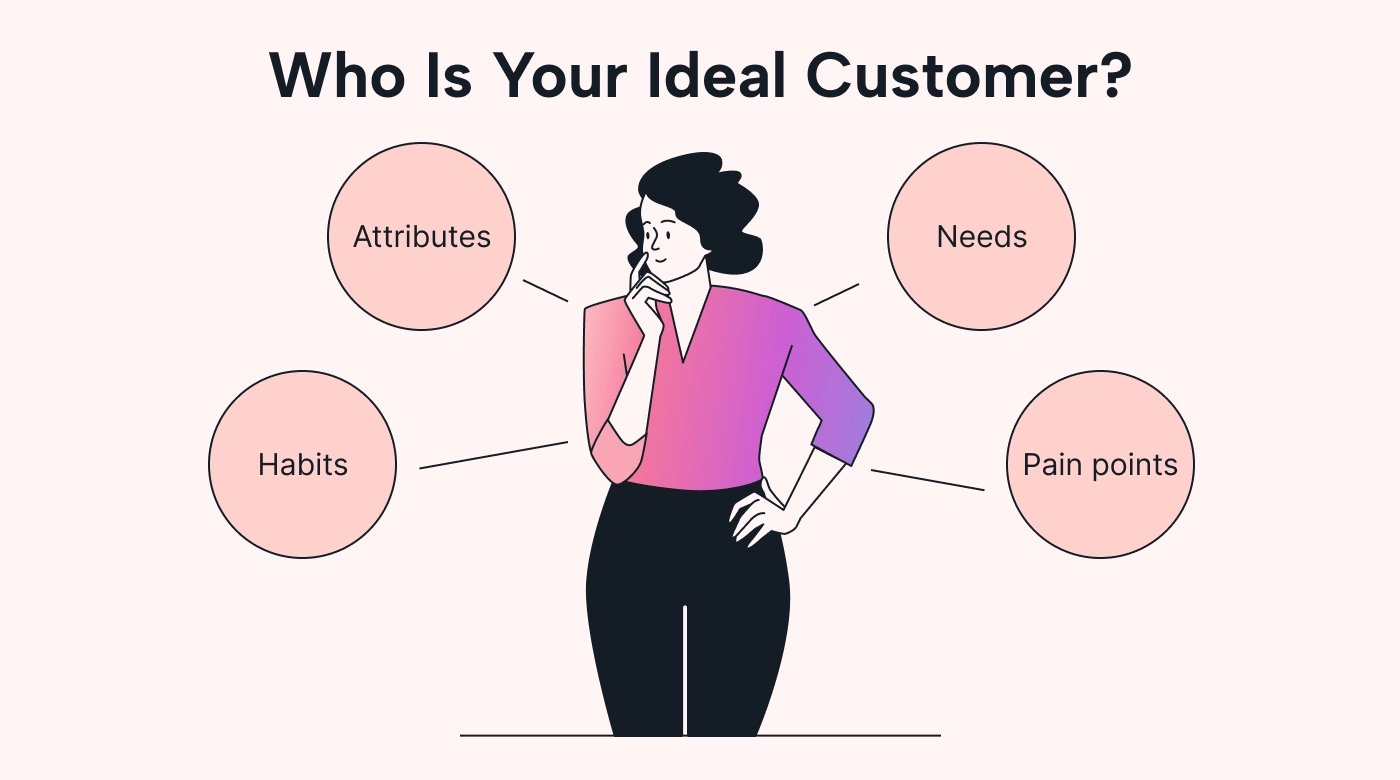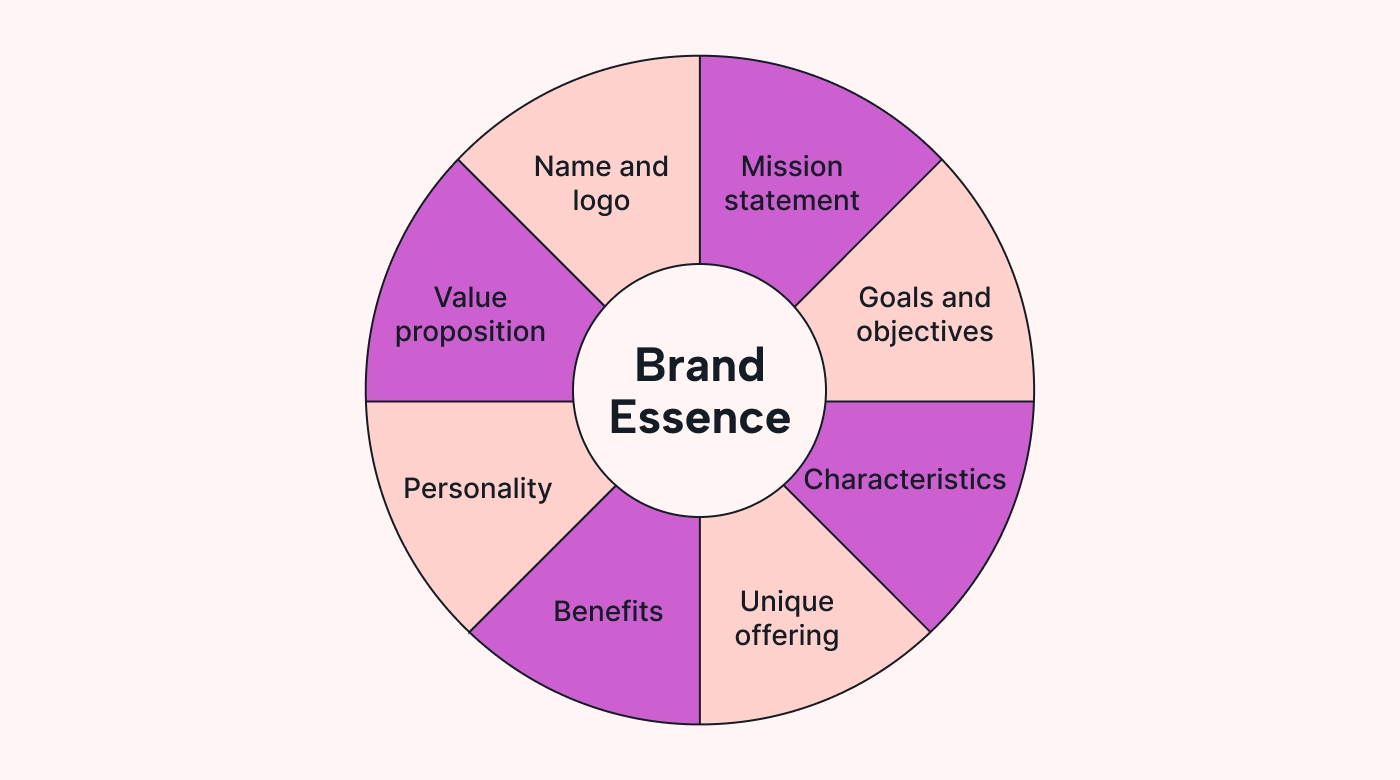You know you have the best product out there. But do your customers?
If you’re not generating the market interest, loyalty, and revenue you think your product or service deserves, then it’s time to re-examine your brand.
Developing a brand positioning framework is the ticket to getting your product out there.
This article defines a brand positioning framework, lists the benefits and different types, and outlines the steps needed to develop your own today.
What is a brand positioning framework?
A brand positioning framework is the unique approach a business takes to market its product to its ideal customer base. It builds on a brand promise that connects to customer needs and addresses customers’ pain points.
These frameworks include the images, characteristics, and phrases companies use to represent and set their products or services apart from the rest of the market. Solid frameworks arise from their organizational mission, vision, and value proposition.
A brand positioning framework aims to get your product into the hands of your ideal customers precisely when they need it. A successful one ensures that your product is also the first one a customer thinks of when they’re ready to make a purchase.
Why does your business need a brand positioning framework?
It’s well worth the time, energy, and effort needed to build a strong brand positioning framework.
Here’s why:
It helps your business stand out from the competition
Generic doesn’t sell. Recognizable branding does. Developing a solid brand framework gives your marketing team the tools to make your brand stand out for all the right reasons.
 |
Branding has a significant impact on positioning and orientation in the target market. A brand positioning framework defines how customers connect your product to their current needs.
For example, people looking for soda buy Coca-Cola because of the feeling associated with the brand. It’s nostalgic, classic, and reminiscent of summer days. And that feeling makes the beverage taste better.
It makes it easy for customers to find the right product or service
As customers search for “just right” products, they increasingly look to connect with businesses that align with their beliefs and values.
For example, customers looking for athletic wear may opt for lululemon. This company positions itself as a leader in promoting an active lifestyle for men and women through high-quality, long-lasting clothing. It further emphasizes and supports active lifestyles by encouraging its stores to host community events, such as yoga classes and running clubs.
Similarly, Athleta promotes an active lifestyle through its line of high-quality athletic wear and in-store community events. However, Athleta sets its brand apart by focusing on empowering women and girls of all ages, shapes, and sizes to improve their strength and well-being through activity.
The product is relatively the same. However, the brand positioning is different in subtle ways. These distinctions help these companies appeal to their specific target audience.
It helps establish and maintain customer loyalty
Customers who connect with a company’s mission, vision, and values are more likely to purchase from them again.
Brand positioning plays a mediating role in customers’ brand experience and loyalty.
Consumers also increasingly prefer brands that are authentic and consistent in their communication and behavior, so staying true to your value proposition is essential to developing your brand positioning framework.
It helps establish a more cohesive and focused marketing strategy
Developing a brand positioning framework helps you better understand the perfect customer, including their values, desires, and pain points — not to mention it’s much easier to tie your marketing strategy with a clearly defined brand.
Customers start to build beliefs and impressions based on the brands they see. For example, they may feel that more colorful logos imply more product options available.
It makes your brand synonymous with its product
The most successful brands have placed their product so firmly in customers’ minds that they think of the product name more so than the product type.
 |
For example, does your child ask for a bandage or a Band-Aid? When you’re struggling with a head cold or allergies, do you reach for a tissue or a Kleenex? When you look for something online, do you ask a search engine, or do you Google it?
That’s the power of brand positioning.
Types of brand positioning strategies
While there are many different ways to position a brand, the strategies often fall into a few common types:
Differentiation
How do you make your product stand out from the crowd?
Based on your business model, you can take two approaches: a broad or focused differentiation strategy.
A broad differentiation strategy shows how your product stands out and appeals to the majority of the market. Whole Foods uses this approach to appeal to customers seeking healthy foods and sustainable living.
A focused differentiation strategy targets a niche or smaller portion of the market to address a specific pain point. Secrets Resorts is an excellent example of a company that uses focused differentiation. While it’s a fixture in the all-inclusive resort market, it caters exclusively to couples and groups without children.
Quality-based
If your business has a quality-based brand positioning framework, your emphasis is placed on the quality of your product.
Each product advertised is high-caliber, and your business is committed to developing, producing, and maintaining these high standards.
For example, BMW’s “Ultimate Driving Machine” branding emphasizes luxurious design and craftsmanship as hallmarks of the perfect driving experience.
Customer service-based
With customer-served-based frameworks, your business is zeroing in on the customers themselves.
The customer experience is, first and foremost, related to your business model, so your framework should focus on building and maintaining their long-term engagement, satisfaction, and loyalty.
Chewy offers a customer-first brand with round-the-clock service support and 100% satisfaction guarantees with all purchases. They take this focus on customers a step further. If a customer has lost a pet, Chewy sends cards and quickly provides refunds for unneeded items.
Convenience-based
If you want to showcase the convenience of your product to customers, you may want to consider the convenience-based brand positioning framework.
Convenience could be related to the ease of purchase, delivery, or return compared to other brands. Or you might want to highlight how your product makes your customers’ lives easier through a unique feature.
Amazon is one of the best-known convenience-based companies. Its commitment to fast, free delivery for members encourages customers to order items from home rather than make a trip to the store.
Price-based
Use the price-based framework if you know (and can guarantee) that your prices consistently beat the competition.
Customers don’t want to spend more than they have to, so appealing to your brand’s affordability may convince some to try it.
Walmart has positioned itself as the best place for customers on tight budgets looking for low prices on everything from groceries to auto parts.
How to create a brand positioning framework
Now that you know the different types of brand positioning frameworks, it’s time to narrow down which type best fits your business so you can start developing your own.
Start with your brand positioning statement
A brand positioning statement outlines how your organization’s value proposition aligns with your customers’ core needs. It’s a road map for your marketing strategies and must be carefully developed so that you can deliver on your promises.
Ask yourself the following questions as you draft your positioning statement:
1. Who is my ideal customer?
Think about their habits, attributes, and other lifestyle characteristics. Put yourself in their shoes by asking, “What am I looking for?” or “What problem am I looking to solve?”
 |
2. What is the niche for my product or service?
You know your industry category, but is there a specific niche in the market you fit into? Check out the competition to see where your product fits in and where it could stand out.
3. How does my product or service help my customers?
You know your customers’ needs and pain points. How can your product or service help? What can you offer your customers that the competition cannot or has not done yet?
4. What are my product or service’s unique offerings?
Solving your customers’ problems is essential to reaching your target customer, but you also want to position yourself uniquely.
How does your business align with your customers’ core values and interests? How can you make them feel connected to your company vision, satisfied with your product, and willing to return? How does your product solve their specific problem?
Create a brand essence chart
Also called a brand wheel, a brand essence chart is a visual tool companies can use to guide their brand positioning frameworks.
 |
This chart includes the critical components companies need to include to develop a strong brand position.
- The business’s name, logo, and other images that are essential to your brand.
- The mission statement and vision that guide your company.
- The business’s primary goals and objectives, including its plans for market growth and increasing its revenue.
- The value proposition, or what your company does, how it stands out, and why customers should choose it.
- The personality associated with your business. Is your business considered streamlined, focused, and efficient? Or is it fun, playful, and customer-oriented?
- The characteristics of your product or service, including type, quality, and price.
- The benefits customers can expect from purchasing your product or service. Can they expect 24/7 customer service and quick resolutions to problems? Does your product or service come with a lifetime warranty or guarantee?
- The unique offering your product or service delivers that set it apart from the competition.
You can adapt your brand essence chart by choosing templates that align with your organization.
For example, you may want to add more information. Some businesses find it beneficial to include statements like “How does the brand make me feel?” or “What does this product do for me?” to help narrow their positioning framework further.
Measure the effectiveness of your new brand positioning
Once you’ve established your branding, take additional steps to ensure it’s meeting the mark.
 |
Start with your customers. Gather feedback through surveys, interviews, and focus groups. Check social media and online review sites. Send regular follow-up emails to your customers, including links for them to leave reviews and report any concerns they might have.
Track your key performance metrics — sales revenue, sales growth, sales size, conversion rate, sales cycle length — over time.
Your long-term growth and success ultimately reflect the power of your brand positioning framework. You’ll see this in your loyal customer base, high referral rates, consistently positive reviews, high level of customer satisfaction, and steady revenue growth.
Streamline the creation of your brand positioning framework with Motion
Now you know why your business needs a brand positioning framework and how to develop one of your own.
While it takes time, energy, and effort to identify and establish the right branding, the boosts in customer loyalty and retention (not to mention your bottom line) will be well worth it.
Why not turn to a platform that allows you to easily prioritize and spend more time on what matters? Motion automates your schedule based on your events, meetings, tasks, and priorities. You can block off (and protect) focus time to develop your brand essence chart without worrying about missing other important tasks and meetings.
Contact Motion to start your 7-day, risk-free trial today.

Jodi Monroe is a content writer and blogger in the SaaS space. When not at her laptop, she’s planning her next travel adventure.




